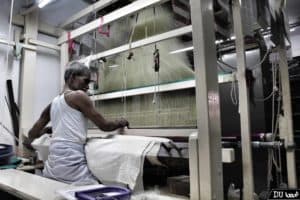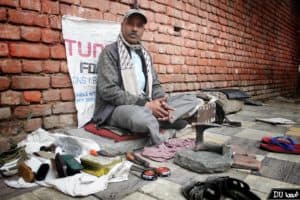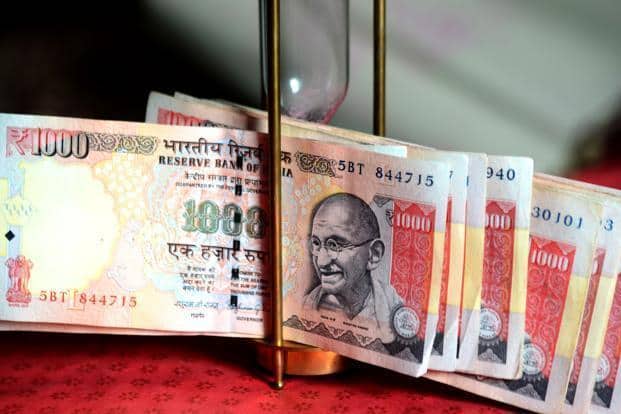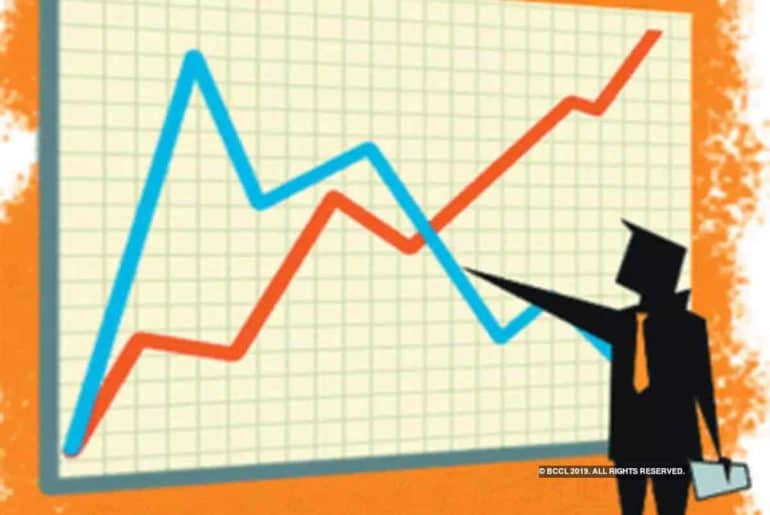This piece will help you understand the complex and catastrophic nature of civil wars and challenges some of the myths around it.
Civil Wars, whenever I say this word, most of you would have the names of countries like Syria, Iraq or Afghanistan, and organisations like the Islamic State of Iraq and the Levant, Al-Qaeda or Boko Haram. These countries have suffered the loss of heritage, culture with millions of displaced, thousands killed. But if you thought and still think that civil wars are just like any other war then you are in for a surprise.
Whenever two countries or nations fight, they fight for the pride of the respective nationalistic ideas or identities, the example of India and Pakistan is a very relevant one here. India and Pakistan till now, have fought four major wars with each other. But in each one of them, the Pakistani Army and the Indian Army were fighting for the pride of their nation. Similarly, when India and China fought in the 1962 Sino-Indian war, two different ideologies were morale boosters for the two armies. One, which established the Republic of India and the other which established the People’s Republic of China. But when we talk about civil wars, we are looking at a completely different ball game.
In civil wars, people who once were brothers turn against each other. The population just forgets about the heritage of their own country and goes on destroying whatever comes in their way of unending pursuit for power. It is very rightly said that a weapon in the hand of a human, gives them a lot of power. When a person picks up a weapon, they feel superior and feel that they can control everything. But it is after some time, they don’t control the weapon, but the weapon starts controlling them. That is what is happening all around the world right now.
It is not that civil wars did not take place in the 20th century, before 1956 to be exact. But at that point of time weapons were not the primary source of revolution. Fast forward to 1980s and the early 2000s, the power of weapons has driven people from trying to get justice from the government to a point that these so-called revolutionaries have become reckless. They just forget about the very reason they started all of this, justice and equality.
The Afghanistan Civil War has been going on and on since 1978, the Yemeni Civil War started after the Arab spring in around 2014, Syrian Civil War started in 2011 and the Libyan Civil War started in 2011 and they all are still going on with no seeming end. These wars and many others have still not ended, even though solutions were worked out on more than one occasion. These solutions have mostly failed because the people who have now rifles in their hands think that dialogue and talking over the table is far less effective than taking out the solution with a rifle. Discussions, deliberations and debates hold no substance whatsoever in front of bullets and bombs as these revolutionaries think that a bullet is an answer for everything. The question is, how do these terrorists get weapons and who actually fuels these wars?
If you look at major civil wars around the world, you’ll see one constant thing, there is always an involvement of foreign powers, the Saudi Arabians are interfering in Syria and Yemen or be it the Iranians interfering in Libya, Syria and Yemen or the US involved in the civil wars of Libya, Syria, Afghanistan and Yemen; they all have a personal motive.
The Middle East is still torn in the civil war because the international powers are still hungry for oil and power. Like the United States led forces helped the people of Libya to get rid of their 50-year-old dictatorship but did not help the nation to rebuild itself and now Libya is facing another bloody battle. Afghanistan is still suffering as the United States was very quick and swift when it had to neutralize Al Qaeda and its leader Osama Bin Laden but not very swift when redevelopment was to be done. Recently, the President of the United States of America, Mr Donald Trump very famously said that the United States is not in these civil war-torn countries to rebuild those nations. They are there only to wipe out terrorism. But maybe Mr Trump forgot that it was the US which supplied these terrorists with weapons and money in the first place during the 1980s.
We need to look upon the fact that it was the courtesy of these foreign powers including United States, United Kingdom, Germany, France, Russia and even China that huge amounts of weapons, training and money were given to these terrorist organisations. And no account was kept to monitor the use of these resources, whether they were being used to fight wars or to kill innocents.
There was a project called the ‘Ring Road’ project in Afghanistan that the United States started. The project aimed to rebuild the economy of Afghanistan, which was destroyed by the battle between the Mujahideen and the Soviet Union. As well as the war between the forces of Al Qaeda, Taliban and the United States and other North Atlantic Treaty Organisation (NATO) powers. But after some time, the project was nearly halted around 2003, as all of the funds were re-allocated from Afghanistan to Iraq for the Gulf War, which was another war for the never-ending hunger of global powers for money and oil.
To this date, it is still disputed as to why did the United States invade Iraq. Because nuclear weapons in Iraq were not found but what was to be found was lots of oil. The Afghanistan Ring Road, now is controlled by the Taliban as international powers who actually dug up this hole have left the nation.
The international community, whenever it enters a nation, claims that they are doing so for the betterment and for the freedom of people. But as of now, there is neither any development nor any freedom. The people are willing to even leave their own countries and their very own houses. Even though this mess was created by these so-called ‘global powers’ but these nations themselves now look away.
All of us get to know about these wars and their magnitude from the media but is the coverage enough? Let’s take the example of sexual offences against women, it is estimated that every day 10 women are raped or harassed in India. Often people seem to ignore these rapes and once in a while, we come across a case which really results in a series of posts on social media. But again, after some months, we forget about these issues. We move on with our lives and that is exactly what happens and what is happening with civil wars. We hear about Syria, the millions of people trying to get into other countries, the millions of people forced to be refugees. Think about the people being killed and about the children who lost their families. But yet again, after a fair amount of time, we forget about all of this and move on with our life just as these wars continue to devastate millions.
An interesting fact is that after World War II, the world has not seen any major wars between two big economies or between the top 27 economies to be exact. But what we have seen repeatedly is the use of ‘proxy’ wars by these major economies as a show of strength. A proxy war is where no nation is directly involved but is supporting opposite sides via supplying men and machinery. Nations like the USA, Russia, UK, Germany, China, etc. have used internal conflicts like Syria and Yemen as playgrounds, which not only sounds unethical but in reality, is. An interesting fact is that the terror group ISIS or the Islamic State makes most of its revenue by selling crude oil. This oil was produced in the numerous oil refineries that they had captured in Iraq and Syria.
The question, is that who actually bought this oil? If you go back in history, you will very easily find that many western powers and eastern powers need oil for their economies and even have waged wars for it. Thus, it is being alleged that countries like Russia, China, North Korea and even Western Nations buy this oil. So, the question remains, how corrupted is this system and how deep is this hypocrisy that runs through it?
You would have often seen videos of Islamic State, Al Qaeda, Boko Haram, etc. so-called fighters riding on these huge tow trucks and moving on in massive caravans. A research was done and it was found that around 90% of the transportation used by the terrorist organisations like ISIS are made by Toyota. While Toyota mostly says that they are not selling any vehicles to the terrorist organisations but that they purchase it from the second-hand markets.
Take the example of cluster bombs that are being dropped by the Syrian Army on the nation’s civilian population repeatedly. It was found that the materials which were used to make these cluster bombs were made in Turkey. Take up the case of the Saudi Arabians, who are relentlessly bombing civilian targets like hospitals, schools and even funerals in Yemen. The bombs and the fighter jets used to target these civilians are being supplied to the Saudis by the US. Besides this, the Saudi Arabians get battle damage replacement on these weapons by the United States, where the battle is the Yemeni Civil war.
We can see that a nation like China can exert its influence on other countries around the globe as it has money and a good economy. The bitter truth is that every single bomb which has been supplied to Syria or Yemen or every single raw material supplied to these civil war-torn countries, give huge amounts of money to the economies of the world powers and it is because of this money that we are able to grow at a rapid pace.
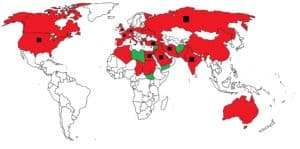
Image Credits: Aniket Singh Chauhan
(The countries marked in Green are the ones where civil wars are taking place. While the ones in red are indirect or international participants. The ones with a black square on them signify that they are involved in more than one civil war)
If we try to talk about the solutions, the first question that pops up is whether the exporting of weapons should be stopped? Or should we stop exerting power? But is stopping these activities, the answer to global civil wars? If we stop everything then firstly our economies will suffer, millions of people will get unemployed and those are the right ingredients for starting a decades-long civil war.
The example of the alcohol and tobacco industry can help us understand this issue better. According to several studies, if these products are banned and production is stopped, even though there may arise short term problems but such actions, in the long run, can increase productivity. But the short-term consequences themselves would be disastrous. Houses are destroyed, lives get ruined and people are even sold in some parts of India to get the money for buying such products. Firstly, our economy will be hit because a lot of people will be laid off their jobs and secondly, people will think of it as an attack on their personal liberties. Similarly, in the weapons industry shrinking of orders will result in job cuts and unemployment which will cause unemployment levels to go haywire.
But then what is the solution to stop Civil Wars? No global power in the world, at any point, would stop their intelligence network and thereby shrink their influence. Because, the more the governments around the world are affected by the actions of a single nation, the more powerful that nation is. Examples of our very close neighbour of Sri Lanka or Rwanda can be taken up here. The civil wars in these countries ended with an unprecedented genocide by one faction on the other, with no regard for human rights at all. But both of these Nations today are peaceful, and people have food in their bellies, money in the hands and a house to sleep. So, the question which now arises is, is it essential to completely disregard the Human Rights during a civil war to let its people live peacefully after the war? According to me, this is absolutely not the answer. And that is what makes civil war so much more complex than a war between two major powers.
As two major powers can sit on a table, discuss and deliberate the peace treaties but the factions in a civil war, who only know the language of a rifle cannot understand the language of negotiating. That is why civil wars are a huge mess which gets even more cluttered the moment international forces interferes.
Hypocrisy in civil wars extends to unforeseeable levels. Afghanistan right now is being ruled by the Taliban Government which the United States was fighting at one point of time. And currently is actually ready to negotiate the very leaders of Taliban who have killed children, women, minorities and even US soldiers for not abiding by their rules.
Every great nation on the face of this Earth, at one point, faced or was part of a humanitarian crisis. Be it the United States which killed millions of Native Americans and destroyed their culture; or be it Russia/USSR which starved and executed millions in their Gulag Camps; or be it China which caused the death of more than 25 million Chinese because of manmade disasters like the Great Chinese disasters, a disaster caused by the Great Leap Forward programme started by its so-called founding father Mao Zedong; or be colonial powers like England, France, Denmark, Belgium and Germany who accumulated their power and influence from around the world by stripping each and every person in their colonies of wealth, culture, heritage, language and even their life.
It is estimated that imperial powers killed more than half a million people in their colonies. For perspective, this is equivalent to the added populations of Indonesia and Brazil. Even India saw a genocide on its Western as well as the Eastern borders, wherein nearly 2 million people died. But today, India is one of the top 10 largest economies in the world. Therefore, after seeing these examples, the question which arises is- Is the utter disregard to Human Rights a precursor to the establishment of a Great Nation? The answer to this question can be summarised in just one line.
“In times of war, the law falls silent”
-Marcus Tullius Cicero
But maybe it is our responsibility as human beings to not let the law become blind during the times of conflict. It’s often believed that it is actually the instruments of warlike weapons and armies that can bring peace or what is also known as military deterrence. But if we can develop such complex military weapons, then humankind can also develop means of peace and justice that will never fall silent, no matter how horrifying the future civil wars and genocides are.
Featured Image Credits: The Free Press Journal
Aniket Singh Chauhan
[email protected]







